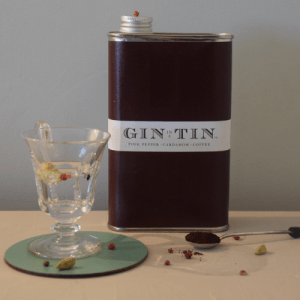If you are a gin enthusiast like us, then probably most of your gins in your collection have ‘London Dry Gin’ on the label – but what does that truly mean? In this article, we will be breaking down everything you need to know about this tasty spirit.
The History Behind London Dry Gin
The term ‘London Dry Gin’ appeared in the 19th century after we Brits developed a taste for the spirit during one of our favourite periods of time the great ‘gin craze’, which was a century earlier. But did you know that up until then, many of us were drinking Dutch Gin, which is also known as Geneve . This popular spirit was brought back by soldiers during the Thirty Years War in the 17th century.
As you probably know, London dry gin became very popular, very quickly and nowadays, it doesn’t even have to be made in our great capital city to have the same label. The term ‘London dry gin’, actually refers to the method of distilling said gin. When the words London Dry Gin appears on the label of a bottle (or tin!) It means that a specific process has been used when it comes to making the gin inside.
In 2008, the EU actually passed a law which laid out exactly what had to happen to the spirit before it could be tote the name London dry gin. For example;
- Must have a neutral base spirit which has to be distilled to at least 96% ABV
- Nothing but water and sweeteners (a very small amount) can be added to the gin after it’s been distilled – and in case you are wondering, we at Gin In A Tin don’t add any to our gins.
- None of the botanicals added can be artificial
- All botanicals must be added during the distillation process
These regulations came into effect because during the 1700s, the gin craze era, there were little rules when it came to producing this lovely spirit. Many distillers could do whatever they pleased to make gin, meaning that the spirit being created was either undrinkable, didn’t taste good, or was just dangerous to drink.
A lot of the danger came from the post-distillation process, where they would add artificial ingredients, chemicals and colourings all to make it taste slightly better. Some distillers went as far as adding toxic chemicals to their spirits, making it so dangerous to drink that many people died – talk about a bad cocktail!
What Does London Dry Gin Taste Like?
Anyway, since the regulations have been in place, we like to think that we are going through a second ‘gin craze’ period – without all the dangerous chemicals of course! So, now we know the history of gin, what does London dry gin actually taste like?
As we like to say, London dry gin is a straight-forward, no-nonsense gin. London dry gin is made with juniper and distilled as a base spirit. After you’ve got your base, that’s where you can start to have fun by adding other botanicals to create a delicious taste palate. Plain London dry gin by itself will have a very juniper-forward flavour palette which will
taste fresh and woodsy, but you may also detect a fruity citrus flavour and a hint of spice as well.
The Best Way To Drink London Dry Gin
Here at Gin In A Tin, we believe that gin is one of the most versatile and delicious spirits on the market to date. With a good gin comes the opportunity to create a wealth of tantalising cocktails. One of our absolute favourite ways to enjoy London dry gin, would be in a classic G&T – with a complimentary garnish of course.
Take blend No.16 for example; made from pink pepper, cardamom and coffee. This gin was inspired by the process of making an excellent espresso or a wonderfully frothy cappuccino. With a lovely balance of pink pepper and cardamom throughout, you will also notice a slight coffee finish which really rounds off the tasting palate for this gin. Cardamom lies at the very forefront of this spirit with juniper in the body to follow. The tasty mix of the spicy pink pepper and the grounding coffee on the finish will leave you with a warm, yet refreshingly light taste. This gin makes for the perfect accompaniment in your gin and tonic serve. We would recommend pairing it with a no-nonsense tonic water such as Schweeps, and garnishing it with a coffee bean and ice – now, there is a summer cocktail for you.

Yes – G&T’s are the perfect summer drink, but also, gin is so versatile that putting it in a winter warmer is also a great option. Blend No.13 was inspired by a trip overseas, having seen ginger being grown on a commercial scale. This gin houses distinctive notes of ginger, angelica root, and lemon peel. Many other botanicals are also present, and they all centre around juniper, creating a balanced late autumn / early winter warmer. For this winter cocktail, we would recommend a gin and tonic with garnish of lemon peel. As this gin has a powerful tasting palate, we would suggest pairing it with a lighter tonic such as Franklin & Son, or Fever Tree.

Recent Comments